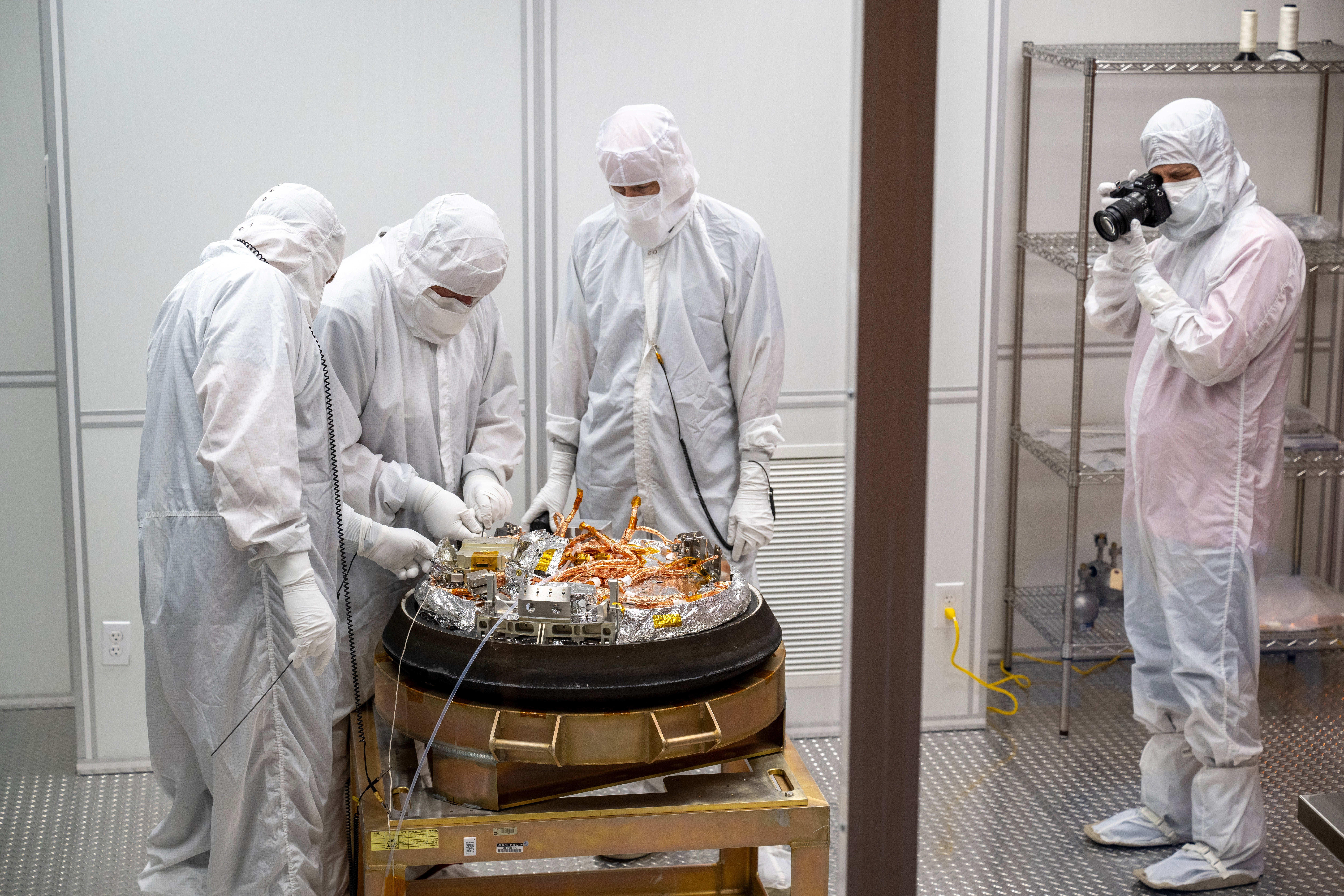
Teams process the asteroid Bennu sample return capsule from NASA’s OSIRIS-REx mission in a cleanroom in 2023. Credit: NASA.
Bennu is a roughly 0.3-mile-wide (500 meters) asteroid that orbits in near-Earth space. Scientists suspect it’s a chunk of a larger asteroid that broke off due to a collision farther out. Telescope observations and data collected by NASA’s OSIRIS-REx spacecraft showed that Bennu has minerals that have been altered by water. Hence, scientists suspect the asteroid’s parent body accreted ice that subsequently melted after it formed around 4.5 billion years ago.
Now, a team of researchers have completed an early analysis of a sample of Bennu returned to Earth by the spacecraft last fall. They reported their findings in the journal Meteoritics & Planetary Science. The results indeed point to a watery past that is reminiscent of processes that take place on Earth and icy moons in the solar system.
The group examined 14.9 out of the 121.6 grams of the total material brought to Earth. The study sample included aggregates of fine and coarse particles, and stones up to 3.5 cm wide. What they found is that the majority of the minerals are ones produced when silicate materials interact with water, especially alkaline fluids.
“Think soda water with lots of carbon dioxide,” says lead author and planetary scientist Dante Lauretta of the University of Arizona, who is also the OSIRIS-REx Principal Investigator.
Related: Material from Bennu shows signs of components necessary for life
A muddy asteroid Bennu
The team found various varieties of the aqueously altered minerals, including serpentine, smectite, carbonates, magnetite, sulfides, and phosphates. The minerals are present as individual particles and as crusts coating other materials.
Cosmochemist Rhian Jones of the University of Manchester, who is a member of the Sample Analysis Team, suspects Bennu’s parent body became a “muddy ball” over time, when the ices melted.
The study team also found evidence of fluid flow. In particular, some of the phyllosilicates had filled tiny fractures that look like veins in the rocks. Images taken by OSIRIS-REx also show meter-long-veins in boulders, also thought to be minerals that precipitated once water evaporated.
The study team also found magnesium-sodium phosphate. Lauretta says this type of phosphate is intriguing because it only forms when water has become saturated with carbonates, suggesting that pools of water persisted on Bennu’s parent body for an extended time.
“Depending on the ice to rock ratio, there could have been an ocean or lake capped by ice, like the icy satellites in the outer solar system,” he says. Sodium phosphate has been detected in grains of ice in plumes erupting from Saturn’s moon Enceladus’s subsurface ocean, the researchers note.
Related: Bennu sample has rocks unlike any meteorite ever found
The team also found that some of the particles have hummocky shapes resembling cauliflower. Similar rocks found in southern Italy could have formed in areas that were exposed to shallow seas, they note. Jones says the magnesium-sodium phosphate indicates a “very, highly evolved fluid system,” akin to the salty brines found in evaporating lakes on Earth’s surface.
Phyllosilicate deposits are also found at hydrothermal vents at mid-ocean ridges, where plumes of heated sea water emerge. Some of the particles in the Bennu sample have angular or sharp edges that could have formed in a similar high-pressure environment, the researchers note.
Bennu’s parent body
Future analyses of the sample return could also help put a timeline on the hydrothermal processes that took place on Bennu’s parent body. One possibility is that heat from radioactive decay within that body began to melt ices shortly after it formed, with the heat and aqueous alteration persisting for millions of years.
Geochemist Lucy McGee of the University of Adelaide, who was not involved in the sample analysis, says she is curious about the possibility that there may have been multiple episodes of heating and fluid alteration, particularly in producing the veins.
“Here in Australia, we have ancient rocks that have overprints of different processes that happened over time,” she says.
Such heat could have been generated by impacts or from the gravity of larger bodies that stirred the asteroid’s interior.
Lauretta says he is also looking forward to future analyses that will look at the ages of phyllosilicates in the sample return to get a sense of the timing of fluid alteration on Bennu’s parent body. Other endeavors include finding methods to determine whether Bennu’s phyllosilicates formed under higher-pressure conditions like at hydrothermal vents on Earth.
For now, Bennu joins the list of previously discovered sources where hydrothermal activity produces spectacular features like Enceladus’s icy geysers, the Lost City Hydrothermal Field in the Atlantic Ocean, and Earth’s soda lakes.
“What we’re seeing is that these aqueous systems are fairly common across the solar system,” says Lauretta.

